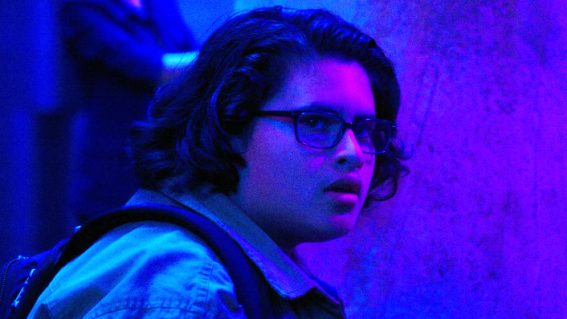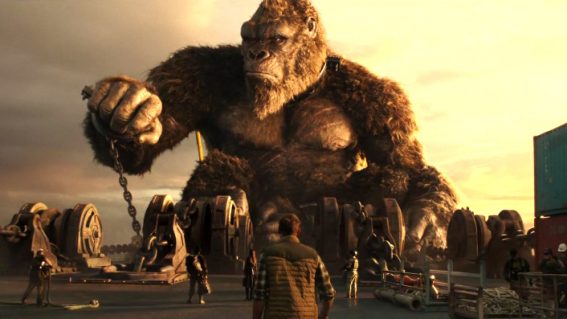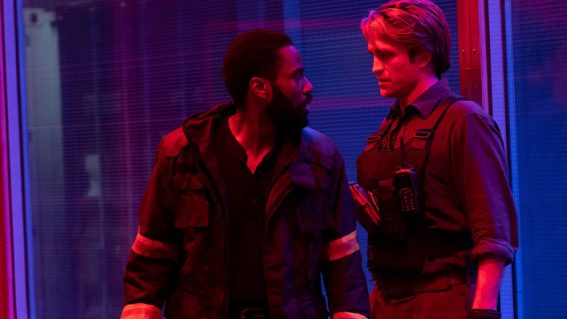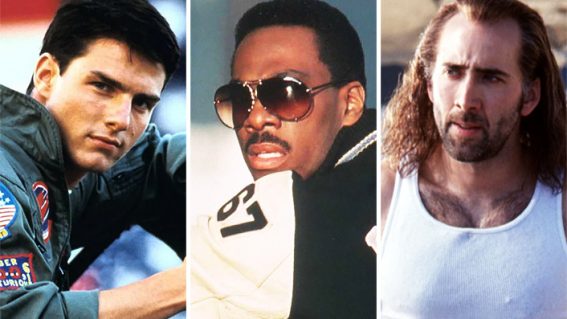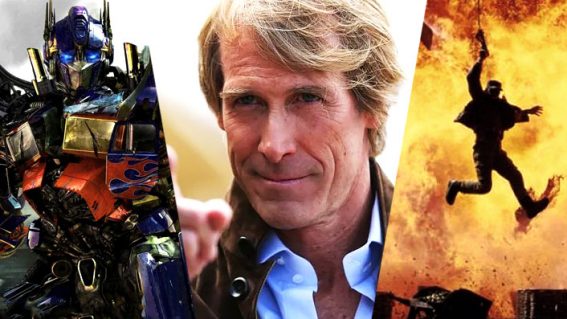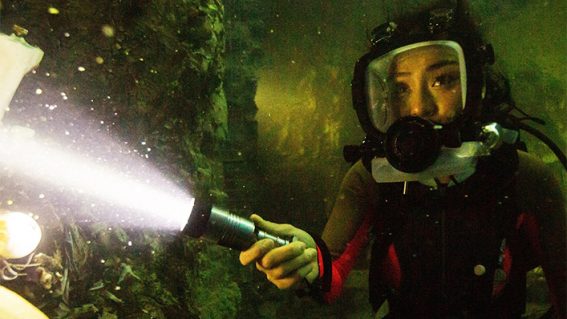Godzilla vs Kong is an impressive cinematic spectacle with a story like a malfunctioning robot
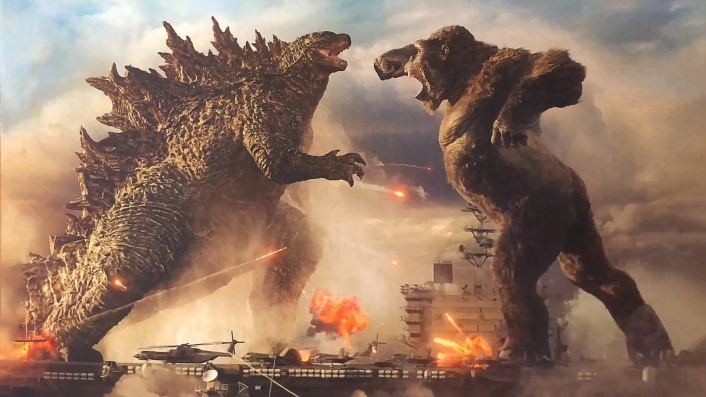
Sure, Godzilla vs. Kong isn’t going to win Best Picture at the Oscars, but this sensory-smothering film is not without its virtues. Here’s Luke Buckmaster’s review.
One does not expect a skyscraper-sized mutant lizard or a 337 foot ape to be good at reading the room—or even able to read at all. Yet the titular bath tub toys in Godzilla vs. Kong seem strangely in tune with the zeitgeist. In the sense that during the current moment audiences, worn down by a pandemic, anecdotally seem very much in the mood for what they’re cookin’—keen to return to dumb things we did in the not-too-distant past, such as gathering in the dark to watch movies we’re pretty sure are going to be bad.
See also:
* All new streaming movies & series
* All movies now playing in cinemas
At least those were my thoughts going in. On the way out, my ears still ringing, it struck me that such sensory-smothering carnage was perhaps not the therapeutic pastime I had imagined it to be. There’s plenty of sound and fury, signifying you-know-what, in director Adam Wingard’s highly anticipated monster movie punch-on, which is one of those spectacles that requires the entering of an unspoken agreement shared between viewer and filmmaker. Which is: we suffer through interminable human interplay and dialogue pilfered from old instruction manuals, and they deliver scenes of cataclysmic eye-gouging destruction.
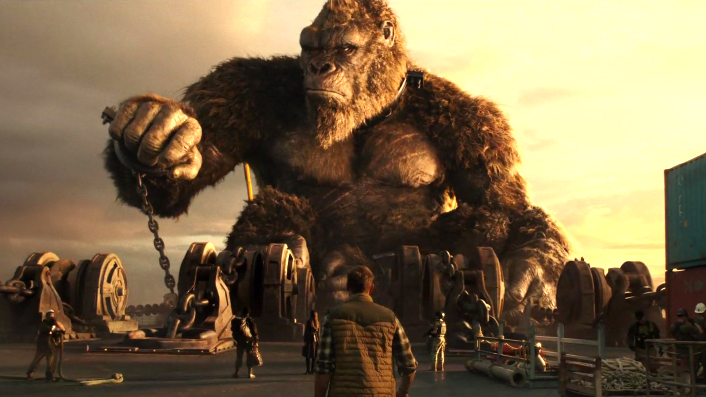
Deal fulfilled; no surprises there. What did catch me off-guard was how richly cinematic the film looks and how spatialized the action feels. The colours begin with faux naturalism and grow wildly neon, culminating in a city-levelling climax lit up like a Tron pinball machine. The initial fauxness comes not from imitations of nature, but, in a Baudrillardian conceit, from imitations of imitations of nature. The jungle where old mate Kong lives, you see—and where the film begins—isn’t a real jungle but a simulation of one. This “Kongtainment” facility is housed in a massive dome in the city.
A point is made from the beginning that size is relative, marking a more developed perspective than the penis joke stamped onto posters of the 1998 Mathew Broderick Godzilla movie (“Size Does Matter”). Early on a young orphaned girl, Jia (Kaylee Hottle), with whom Kong has a special friendship—they are like Elliott and ET, or Pete and his dragon—holds up a homemade doll of her simian friend. She is small. The doll is smaller. And Kong is very large. Until he’s in Godzilla’s company.
The lizard-like leviathan tracks down and confronts the ape, because two alphas cannot exist on the planet at the same time, something something something, justification justification justification. Poor old Kong—a decent bloke who just happens to enjoy drinking fluid oozing from the severed heads of mythical creatures from time to time—is strapped to an aircraft carrier and transported across the ocean. But G-Z gets wind of his location and arrives, triggering the first large scale action sequence.
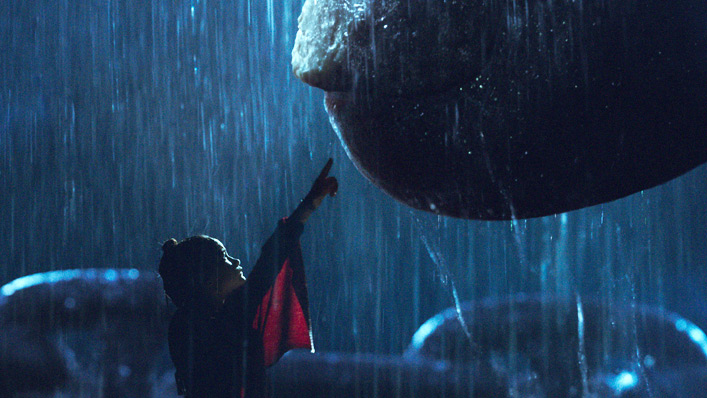
Leading up to that, Wingard and cinematographer Ben Seresin establish an eye-watering look. They understand there is an exploitable relationship between weather conditions and cinematic images—rain, sunlight, mist and wind featuring prominently. Not for narrative transition (the storm in The Wizard of Oz), or symbolism (the snow in Citizen Kane), or other spiffy-sounding purposes. These gents are from the T-Rex in the rain school of thought: inclement weather as a means to beef up atmosphere.
Visually there are lots of big small moments, which kept me interested while the story sludged along and the actors maintained a straight face. Like the image of Jia holding the doll, they incorporate size and perspective. One shot I loved, during that first confrontation in the ocean, captures a jet fighter lifting into the air and soaring into the sky. Camera perched in front, aimed back and downwards, we see Kong in the background, through the glass of the aircraft canopy, getting smaller as the plane ascends.
The cautionary message against exploiting the animal kingdom at the heart of the original King Kong, which is still one of the great adventure movies, is lost—but to be fair it was stomped out of this franchise and its various permutations and hybrids a long time ago. Even that wonderful 1933 picture seemed confused by its own spectacle. I love the film but remain dubious of its famous final line, uttered after the majestic ape falls to his death: “It was beauty (that) killed the beast”. Sure. Or maybe it was the army and the planes and the Barnum-esque crooks who removed Kong from his natural habitat in order to spin a buck.
Back in the thirties cinema audiences saw themselves as part of the crowd clamouring for spectacle, looking up with slackened jaws at the mighty ape and the beautiful Fay Wray. Now we are more like Jia, the little kid, still helpless but also infantilized. What’s next: a movie shown completely from the ape’s perspective? Sounds good—but we might need another pandemic to get in the mood.


